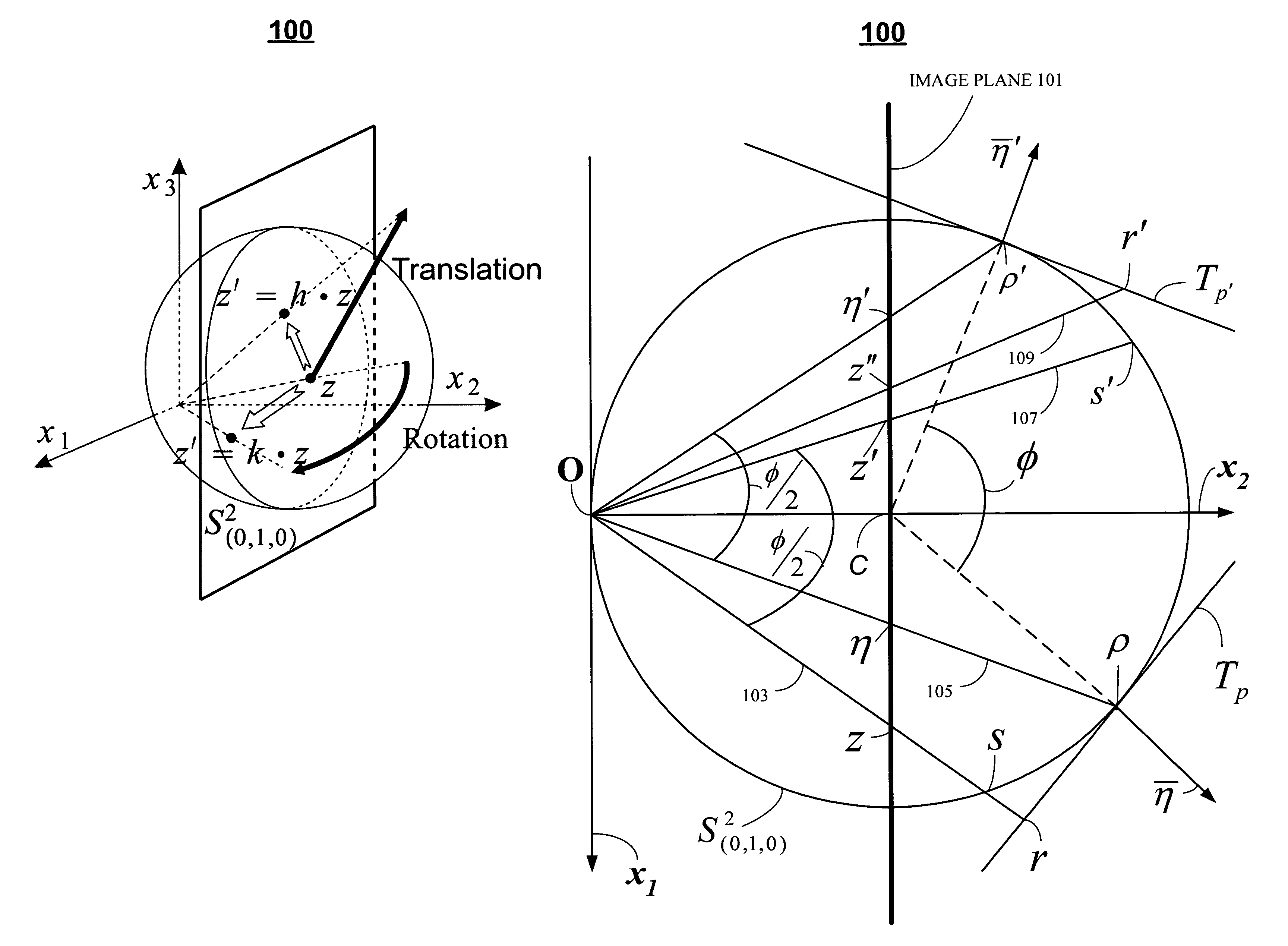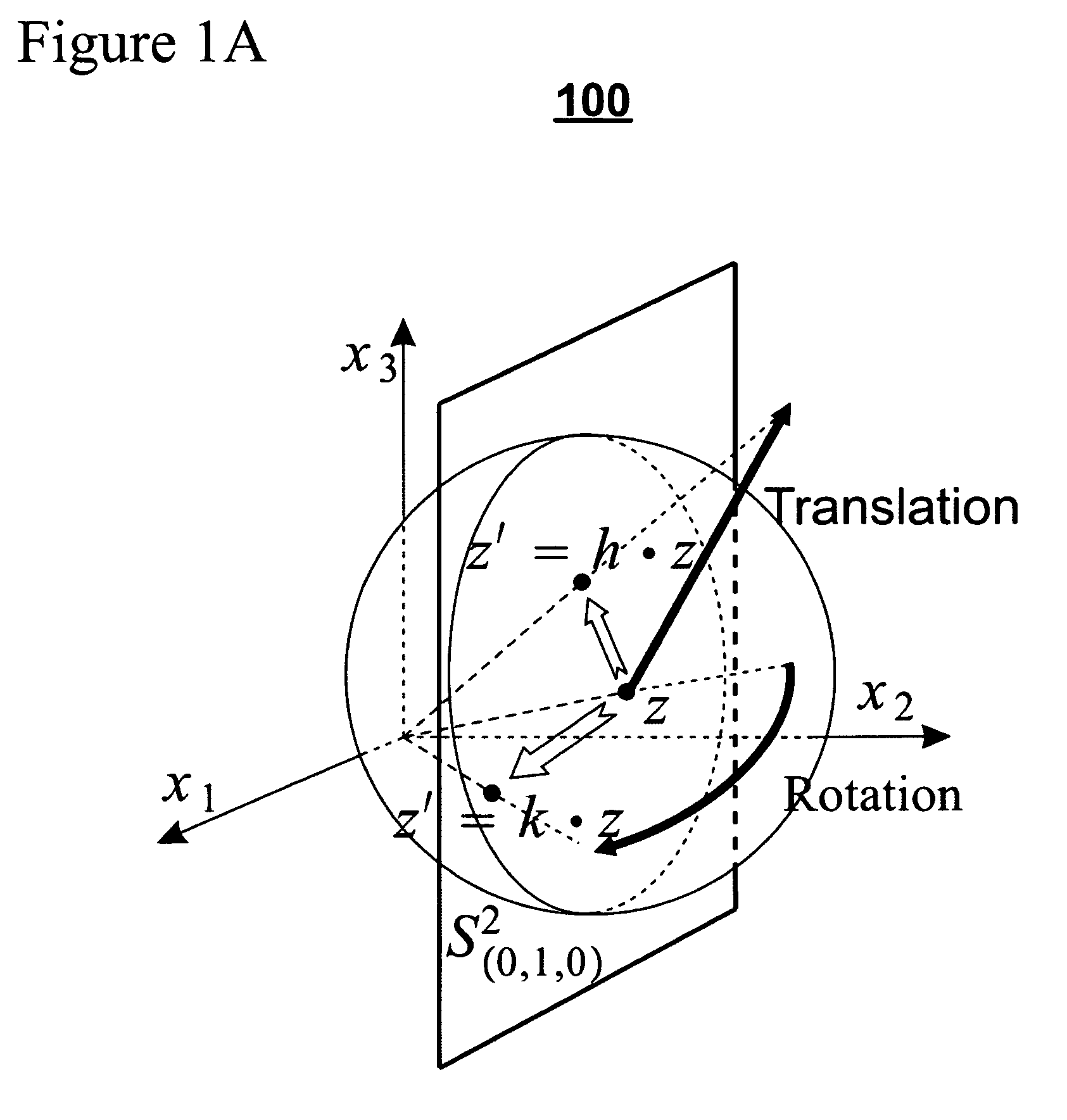Image processing method for object recognition and dynamic scene understanding
a dynamic scene and image processing technology, applied in the field of processing digital images, can solve the problems of difficult recognition of images that have undergone a perspective transformation, computational time-consuming approach, and robots that have trouble recognizing paintings
- Summary
- Abstract
- Description
- Claims
- Application Information
AI Technical Summary
Benefits of technology
Problems solved by technology
Method used
Image
Examples
Embodiment Construction
[0128]To derive the expressions in (4), z′=x′3+ix1 in (3) is written by using standard trigonometric identities, as follows:
[0129]z′=x3′+ix1′=(x3+ix1)cosϕ2-isinϕ2-i(x3+ix1)sinϕ2+cosϕ2=[(x3+ix1)cosϕ2-isinϕ2][i(x3-ix1)sinϕ2+cosϕ2][(x3)2+(x1)2]sin2ϕ2+x1sinϕ+cos2ϕ2=x3+i2[((x3)2+(x1)2)sinϕ+2x3cosϕ-sinϕ]12[(x3)2+(x1)2](1-cosϕ)+x1sinϕ+12(cosϕ-1),
from which we easily obtain the real and imaginary parts of (3) as given in (4).
[0130]Given pattern f:D→R. To remove the conformal distortions generated by (3) in f(g−1·z), we first recall that z∈D⊂C (z=x3+ix1 is identified with (x1,1,x3)) is mapped to s=σ−1(z)∈S2(0,1,0) by the inverse of the stereographic projection σ=j|S2(0,1,0), which is conformal, the sphere is rotated about its center by φ, and the rotated image s′ of s is projected back to the image plane giving z′ expressed in (3). We choose some image point η=b+ia and continue the projection of z from s to r on the plane Tp tangent to...
PUM
 Login to View More
Login to View More Abstract
Description
Claims
Application Information
 Login to View More
Login to View More - R&D
- Intellectual Property
- Life Sciences
- Materials
- Tech Scout
- Unparalleled Data Quality
- Higher Quality Content
- 60% Fewer Hallucinations
Browse by: Latest US Patents, China's latest patents, Technical Efficacy Thesaurus, Application Domain, Technology Topic, Popular Technical Reports.
© 2025 PatSnap. All rights reserved.Legal|Privacy policy|Modern Slavery Act Transparency Statement|Sitemap|About US| Contact US: help@patsnap.com



